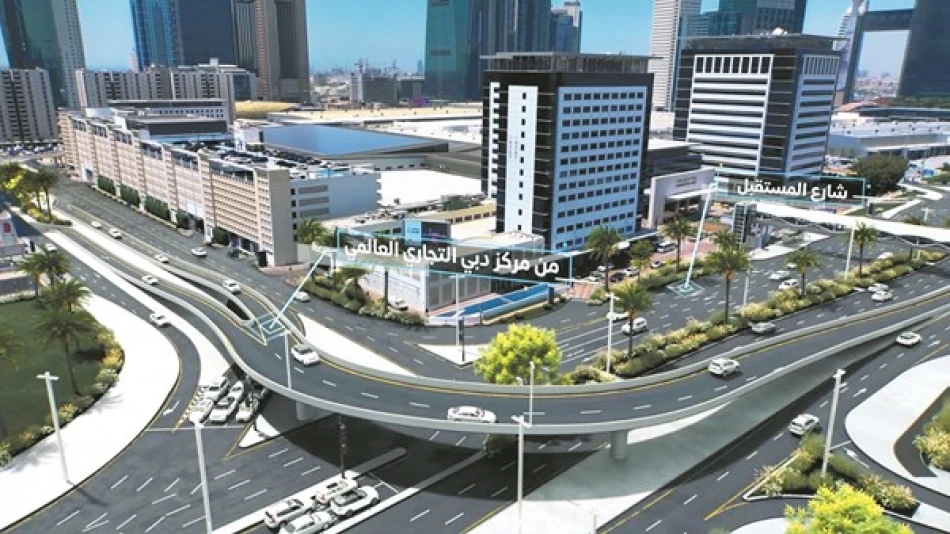
Dubai's Roads Unveil New Interchange to Ras Al Khor Street in August
Dubai Cuts Rush Hour Travel Times by 54% with Strategic Road Infrastructure Upgrades
Dubai's Roads and Transport Authority (RTA) is opening a new traffic exit this August that will slash travel times from 13 minutes to just 6 minutes during peak hours—a 54% reduction that signals the emirate's commitment to maintaining its competitive edge as a global business hub through smart infrastructure investments.
The New Exit: A Strategic Move for Economic Efficiency
The new exit from the collector road will serve vehicles traveling from Financial Centre Road toward Ras Al Khor Road, near the Bur Dubai intersection. This seemingly modest addition represents a calculated investment in economic productivity, as reduced commute times translate directly into increased business efficiency and quality of life for Dubai's workforce.
The project also aims to reduce congestion on the route leading to Dubai-Al Ain Road, addressing one of the key bottlenecks that has emerged as Dubai's eastern corridors experience rapid development.
Part of a Broader Infrastructure Strategy
Recent Complementary Improvements
This new exit builds on recent traffic enhancements in the same area, including the expansion of Exit 25 from Ras Al Khor Road to Al Khail Road toward Al Meydan Road. The RTA converted this single-lane exit into a dual-lane system spanning 500 meters, effectively doubling its capacity to 3,000 vehicles per hour and reducing travel time from 7 minutes to 4 minutes during rush hours.
Responding to Urban Growth Pressures
These improvements reflect Dubai's proactive approach to infrastructure planning as the city continues its rapid urban expansion. Unlike many global cities that struggle with legacy infrastructure constraints, Dubai's relatively young road network allows for strategic modifications that can yield dramatic efficiency gains.
Global Context: Dubai's Infrastructure Advantage
Dubai's ability to implement such targeted traffic solutions quickly contrasts sharply with infrastructure challenges faced by established financial centers like London or New York, where similar improvements often require years of planning and significantly higher costs due to space constraints and existing infrastructure complexity.
Singapore offers perhaps the closest comparison, with its similarly strategic approach to traffic management through technology and targeted infrastructure investments. However, Dubai's advantage lies in its ability to physically expand and modify road networks more readily than the space-constrained city-state.
Economic Implications for Business and Investment
For businesses operating in Dubai's Financial District and the growing Ras Al Khor area, these improvements represent tangible operational benefits. Reduced travel times lower logistics costs, improve employee satisfaction, and enhance the overall business environment that has made Dubai attractive to multinational corporations.
The focus on the Ras Al Khor corridor is particularly significant given the area's emergence as a key logistics and industrial hub, with major developments including the upcoming Museum of the Future area and expanding free zone facilities. Efficient connectivity between the financial center and these growth areas strengthens Dubai's position as an integrated business ecosystem.
The RTA's quick-win traffic solutions demonstrate how strategic infrastructure investments, even relatively small ones, can yield outsized returns in urban efficiency—a model that other rapidly growing cities would do well to study.
Most Viewed News

 Layla Al Mansoori
Layla Al Mansoori






